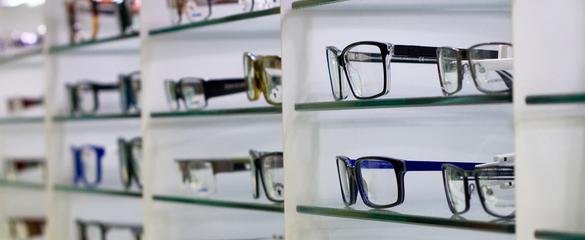It’s one example of how 3D printing is being used to improve medical equipment by tailoring it exactly to the requirements of each patient. Researchers are also working out how to print insoles made for each person’s feet, and how to print surgical equipment for each operation.The idea behind the EU-funded Optician2020 project is to develop on-demand manufacturing of customised spectacles in printing centres located close to opticians’ surgeries, explained Joan Guasch, projects division manager at Ascamm, a Spain-based research centre which is part of the project consortium.‘We are just starting – we are communicating with retailers, setting up the automated designs and defining the protocols of the supply chain for manufacturing,’ Guasch said. ‘Six months from now, we should have the first prototype or pilot product to be tested within the project.’In the second half of the three-year project researchers plan to carry out more than 200 tests on anonymous users.‘We know the technologies are there, but integrating them with user requirements, design and fashion, all these personalised concepts, is a challenge, to make the dream come true to have locally produced customised glasses whether you are in Paris, Brussels or London,’ Guasch said.The glasses are printed on demand near the optician’s surgery, and the project estimates that they will cost 40 % less than normal glasses.Because 3D printing involves a build-up of layers calibrated to form exactly the right dimensions, there are no wasted materials as there would be in traditional manufacturing that involves shaving off excess material from a large starting piece, and the technology should cut the environmental footprint in half, the project believes.Insoles for diabeticsThe fact that devices can be made on site is one reason why researchers are also turning to 3D printing technology to help diabetes patients.“‘Make the dream come true to have locally produced customised glasses whether you are in Paris, Brussels or London.’Joan Guasch, from the Optician2020 projectSufferers of diabetes are susceptible to foot ulceration because of a lack of normal sensation and poor circulation. It is important to prevent, heal and stop recurrence of these ulcers because they can lead to infection and – if not treated correctly – even amputation.Normally treatment involves producing custom-made orthotic insoles, which are personalised to fit individual feet and redistribute pressure away from sites vulnerable to ulceration. But this technique is time-consuming as it requires casts of the patient’s feet to be made and sent off to a manufacturer, a process that can take many weeks.That’s where the EU-funded D-Footprint project comes in. Researchers are working on a way to 3D print insoles in the doctor’s surgery, reducing cost and cutting down painful waiting time.‘In layman’s terms, the idea is to create a desktop 3D printer that could be used by clinicians who would take measurements and then do the 3D printing of the insole there and then,’ said Mark Anderson, the director of the Europe Office at Glasgow Caledonian University, where the project is based.The fact that the insoles can be printed wherever doctors can take a 3D printer makes the technology available to a much wider range of patients. ‘There’s no reason why we can’t go into a remote or poor rural area with a 3D printer in kit form, build it there and use solar to power it – orthotics could be made in situ,’ Prof. Woodburn, a researcher on the project, said.It’s a concept that’s also being exploited by the EU-funded CassaMobile project. The project is developing special 3D printing units that can be placed near hospitals to print surgical guides – moulds made specifically for each patient that show doctors exactly where to drill into bones.‘Currently, every time a patient needs a bone drill guide for surgery, it takes about a week,’ said project coordinator Raphael Adamietz. ‘There is a lot of potential improvement, for example if someone has been through a trauma or accident and needs the surgery fast. Having a container close to the hospital could cut the time from a week to a couple of days or even a couple of hours.’CassaMobile has now been running for about six months, and it expects to have a first version of its bone drill guide manufacturing container ready after two years, with a final version after three. It could also extend the idea to other types of medical equipment.‘We could also think about using the applications in a container on a hospital train such as the ones that travel around India treating patients, or an NGO hospital ship,’ Adamietz said. ‘It cannot replace a complete hospital, but by using different containers or several containers combined, it could certainly provide several functions.’
This article was originally published in Horizon, the EU Research and Innovation magazine.
Listing Description
Documents
No documents available.
Video
Funding Opportunities that may match your offer
Project budget:
17.000.000 €
Deadline:
2025-09-18
Project budget:
4.000.000 €
Deadline:
2025-09-18
Project budget:
9.000.000 EUR
Deadline:
2025-09-16
Project budget:
ENW-M-1 grant: €400,000; ENW-M-1X grant: €800,000
Deadline:
2025-07-31
Project budget:
4000000 €
Deadline:
2025-02-04







